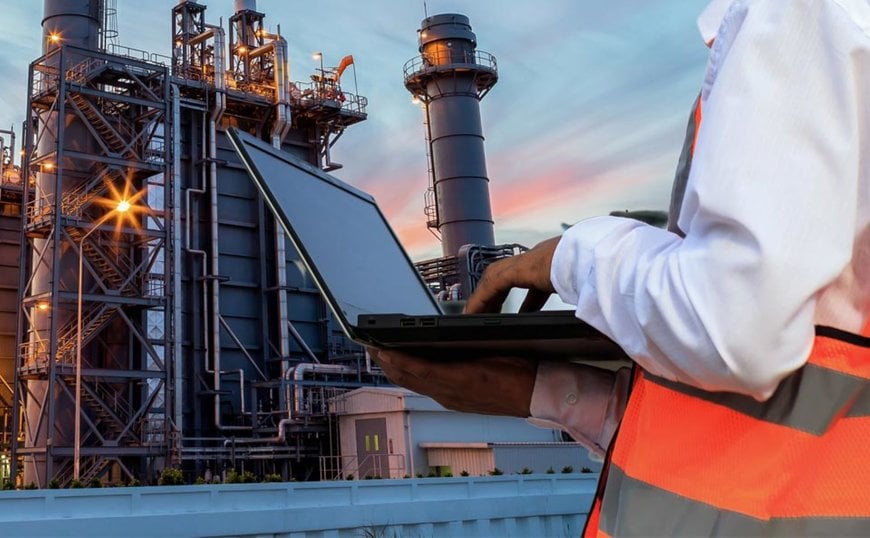www.magazine-industry-usa.com
26
'21
Written on Modified on
Accelerating the shift to remote support
Is it time thermal fluid systems joined the fourth industrial revolution?

The first company to provide remote consultations with doctors launched in 2013. Fast forward to 2020, and the pandemic has meant the entire NHS has switched to remote consultations. In industry, advances in sensor technology and manufacturing software have seen remote monitoring become more prominent. But will maintenance professionals, like doctors, be able diagnose problems online? Here, Clive Jones managing director of thermal fluid supplier Global Heat Transfer, discusses whether the pandemic could kickstart the digital revolution of thermal fluid monitoring.
Because thermal fluids degrade over time, regular thermal fluid analysis is a vital part of maintenance in facilities that use heat transfer systems. Traditionally, carrying out sampling, analysis and maintenance requires on-site support from a thermal fluid expert, who is usually a third-party. As manufacturing facilities implement new procedures to meet social distancing recommendations, it could become more difficult for external engineers to regularly visit sites.
Pandemic or not, thermal fluid analysis is not something that can be put off — it helps ensure compliance with The Dangerous Substances and Explosive Atmospheres Regulations (DSEAR) of 2002 and the Explosive Atmosphere Directive (ATEX 137). These regulations set the minimum requirements for protection against risk of fire, explosions and similar events that can occur when there are dangerous substances in the workplace.
In addition, failing to sample fluid regularly could lead to extensive downtime if issues go undetected — it is a matter of safety, productivity and profitability. Over time, operating thermal fluids at the high temperatures required for process applications can lead to the build-up of contaminants, such as carbon, in the system. Carbon is a natural insulator so can cause a lack of flow that will lead to uneven heat transfer and a system that cannot reach and maintain required temperatures. This will begin to negatively impact product quality and increase energy costs, and could result in costly maintenance and downtime.
Distanced diagnosis
The new guidelines for businesses returning to work will change how manufacturers interact with suppliers and other third parties. For some outsourced maintenance activities, audio or video calls will allow the engineer to understand the situation and offer support without visiting the site.
However, effective thermal fluid management and maintenance requires external specialists to visit a site to collect a sample and perform maintenance on system components. A thermal fluid expert must take a closed sample while the system is hot and circulating, to gain an accurate representation of fluid condition.
Though visiting the facility is therefore still essential, good communication can help to reduce time on site. For example, manufacturers can send external maintenance engineers previous reports or any relevant production information ahead of a visit for sampling. If the company experiences a drop in heat transfer efficiency or an unexplained increase in energy costs, it could help the engineer to get a clearer picture of why this is occurring, and where the problem is.
After the sample has been taken, the engineer will send it to a laboratory for testing and analysis to determine fluid condition. To further limit unnecessary visits to site, engineers can deliver the analysis report virtually, explaining the status of the fluid and offering recommendations on how to maintain or extend the lifespan of the heat transfer fluid. If required, facilities managers and external engineers can also plan any maintenance accordingly so that they can maintain social distancing and hygiene measures.
Continuous monitoring
Embracing digital technologies is one of the ways that businesses are improving productivity with fewer people in a facility. The heat transfer market has been slow to reap the benefits of digitalisation, but the pandemic could be the catalyst for change. Condition monitoring technology could revolutionise how businesses complete accurate thermal fluid management in the future, by both bringing it into the digital age, and by reducing time on site.
Until recently, there has been no way of knowing thermal fluid condition without an engineer visiting a site and taking a sample. However, the introduction of Thermocare® 24/7 Live Condition Monitoring cloud-based remote monitoring system changes everything. While facilities should continue regular sampling using traditional methods, a monitoring system can detect potential issues earlier, reducing the risk of costly downtime in the future. The system continually monitors fluid condition, sharing real-time data with the cloud that engineers can access from any location. The platform can determine the presence of degradation factors and warn maintenance personnel with an alert to smart devices if it detects an anomaly.
Installing a remote condition monitoring system allows engineers to monitor and access accurate data about fluid condition without affecting the flow of the liquid. Investing in this equipment as part of a proactive maintenance programme for thermal fluid management will help to keep heat transfer systems running efficiently. It can also reduce the need for external engineers to visit the site regularly, because they can react to alerts on the remote condition monitoring system and assist when required.
While sampling will still be an important part of maintenance, bringing thermal fluid management into the fourth industrial revolution can greatly benefit productivity, particularly as remote working and virtual communication becomes the norm. The ability to access real-time information about fluid condition from any location will reduce unplanned site visits while still effectively sustaining thermal fluid and system life span.
www.globalhtf.com

